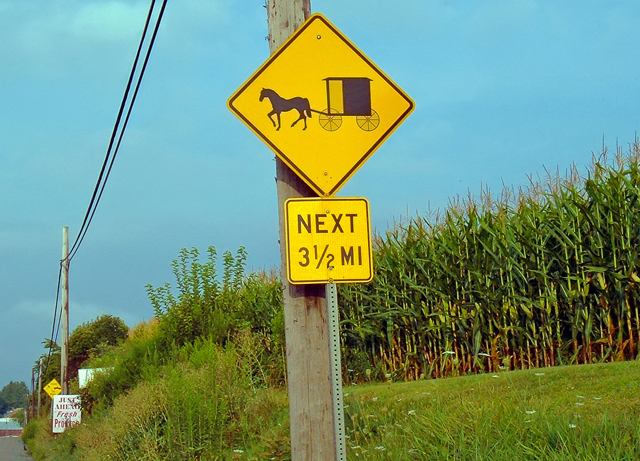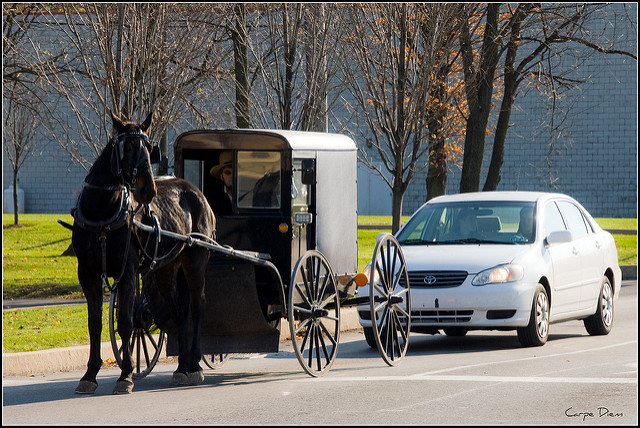Almost every week a familiar story pops up while searching for news about peaceful societies: an Amish buggy was hit by a motor vehicle and several people were injured—or worse. On Wednesday last week, a motorist in Wayne County, Ohio, hit a buggy, seriously injured a child and, the unique aspect of that story, quickly fled the scene. That same day, a newspaper in Lancaster County, Pennsylvania, published an article analyzing why this happens so often and how motorists and Amish people can better prevent accidents.

The writer of the article in the weekly Ephrata Review, Art Petrosemolo, wrote that nearly 8,000 Amish and Old Order Mennonite households in that county alone use horse-drawn buggies and carriages for their transportation. Stephen Nolt at the Young Center for Anabaptist and Pietist Studies at Elizabethtown College told the journalist that most of the Amish and Mennonite homes have two or more wagons or carriages which are frequently being used on the back roads and the main highways throughout the county. While the number of accidents has dropped in recent years due in part to better lighting on the Amish vehicles, there are still many accidents, about one percent of which include a fatality.
Many Amish will train their own horses but some like to have them trained professionally. Mr. Petrosemolo interviewed two sisters from New Holland, Lois and Anna Hoover, who make a business of training horses so they can correctly pull carriages on the public roads.

The Hoover sisters emphasized that developing a sense of trust between horse and driver is essential. Even holding the reins too high may convey a feeling of nervousness to the horse, and it can respond nervously as a result. They said that training a suitable horse—one with long legs and a calm temperament—may take as long as six months.
While many people assume that accidents involving motorists and Amish buggies are often caused by tourists not paying attention as they gaze at the quaintly-dressed people, or by truckers driving large trucks, they are not the major causes of accidents. While tourists are fascinated by the horses and carriages, they tend to drive very carefully to avoid hitting them. The same with professional truck drivers.

In fact, the bulk of accidents are caused by local people, including local delivery drivers, the Hoover sisters contended. They tend to become quite impatient. They “will take risks and chances in trying to get around a carriage, especially where visibility is restricted on a curve or hill,” the ladies said. Many accidents occur at intersections with major state highways, on which some vehicles exceed the state speed limits. Also, even when stopped, horses may have a tendency to back up a bit, which can contribute to accidents.
The Hoover sisters told the newspaper about an accident that had occurred nearby in early June when a buggy was hit by a speeding teenager. The car wound up in a ditch and the carriage flipped over. When the police arrived they found the road covered in red and thought at first it had been a tragic wreck. But it turned out to not be blood. The carriage had been carrying 50 quarts of strawberries that had gotten squashed and the residue was spread all over the road.